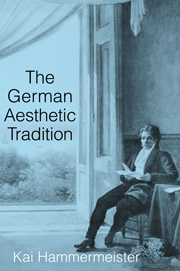3 - Schiller
Published online by Cambridge University Press: 14 January 2010
Summary
Friedrich Schiller (1759–1805) takes Kant's Critique of Judgment as the starting point for his philosophical investigations of beauty and art. As he writes in the first letter of Über die ästhetische Erziehung des Menschen in einer Reihe von Briefen (On the aesthetic education of man in a series of letters, 1795): “I will, to be sure, not conceal from you the fact that it is Kantian principles upon which the propositions that follow will for the most part be based.” And yet, from early on, the Kantian aesthetic paradigm does not satisfy Schiller. More and more Kant's division of nature and freedom comes to be seen as part of the problem of modernity in which man's faculties are pitched against each other and never come to a full development and a harmonious unification. As much as Kant served as the inspiration for Schiller's turn toward philosophical aesthetics, his subjective and ahistorical stance was soon considered by Schiller to be one of the main obstacles not only to a productive aesthetics but also to ethical thought as an investigation of the duties of man toward himself, as well as to his polity.
Before Schiller's encounter with Kant's aesthetic theory – this fact is often forgotten in the reception of Schiller's thought on art and beauty – he went through a Baumgartenian phase characterized by the association of sensuality and beauty with inferior cognition.
- Type
- Chapter
- Information
- The German Aesthetic Tradition , pp. 42 - 61Publisher: Cambridge University PressPrint publication year: 2002
- 1
- Cited by

